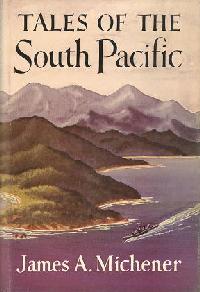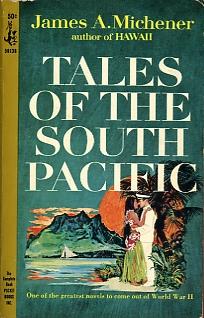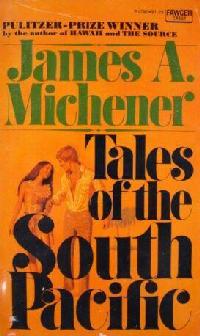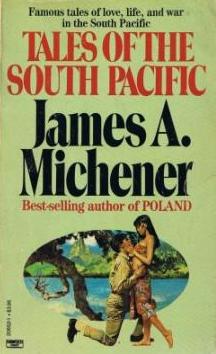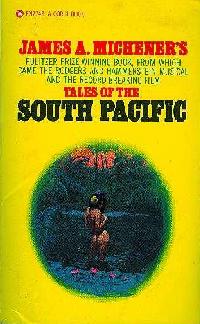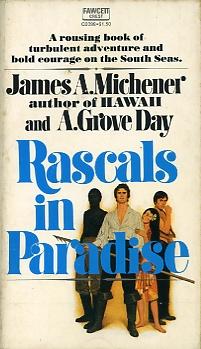Tales of the South Pacific
The beginnings of postwar feelgoodism
By William Wetherall
First posted 1 September 2006
Last updated 1 September 2006
Navy history in South PacificMilitary forces include not only soldiers who fight but soldiers who write about those who fight. James Albert Michener (1907-1997) was such a historian. I myself, while assigned as a medic to an ambulance company in a medical battalion supporting an evacuation hospital at Fort Ord in California, was assigned the job of writing the battalion's history when the battalion commander learned I could write and enjoyed research. Michener, who in 1941 had begun working as an editor at Macmillan in New York, joined the Navy in 1942. From 1944 to 1946 he served in the Solomons as a naval historian in charge of the South Pacific from Australia to French Oceania. During is tour in the South Pacific he sent manuscripts back to Macmillan, which published them as a collection of stories called Tales of the South Pacific in 1947, after he had returned to his old job. The book, which Michener considered a novel, won the Pulitzer Prize in 1948. In the wake of the Pulitzer, Pocket Books published an abridged edition containing 14 of the 19 original stories. This edition went through numerous printings during the run of the Rodgers and Hammerstein musical South Pacific on Broadway from 1949 to 1954. In 1950, the musical also won a Pulitzer. Pocket Books came out with a complete edition of the book when the movie South Pacific was released in 1958. Another spate of interest in the book came during the airing of the television production of the musical in 2001. Most of Michener's earlier fiction was quickly adoped into plays and/or films. In 1949, Random House brought out his second novel, The Fires of Spring, about a struggling writer in America. He was not, however, through with either the South Pacific or with Asia. The New Japanese WomanMichener quit his job at Macmillan and moved to Hawaii in 1949 to write full time. The first thing he did was to take an extended trip through Asia -- Northeast, East, Southeast, and South. The many ordinary people he met and talked with up to the start of the Korean War became the voices of The Voice of Asia (1951), a non fictional work with chapters on "eleven Eastern lands" -- Japan, Korea, Formosa, Hong Kong, Singapore, Indonesia, Thailand, Indo-China, Burma, India, and Pakistan -- and a final chapter on America and Asia. The book begins with Japan, which he visited late in 1950. All chapters start with a geographical overview, followed by several topical sections. The first section is dedicated to "The New Japanese Woman", which begins with this observation (1952 Bantam Giant edition, pages 16-17).
And four pages later Michener concludes, confidence that he has won his case, on this note (ibid., page 21).
I dare say the old boy was in love. And his love for Japanese women shows in practically everything he writes about Japan. Mari Yoriko SabusawaMichener married his second and third wives the same years he divorced his first and second wives, in 1948 and 1955, both years following by one year the publication of his most successful early works. His third wife was Mari Yoriko Sabusawa (1920-1994), who he met in 1954 while in Chicago, where she was the editor of the American Library Association's bulletin. They married in October the following year. To be continued. |
